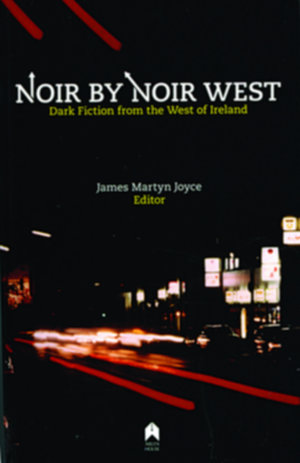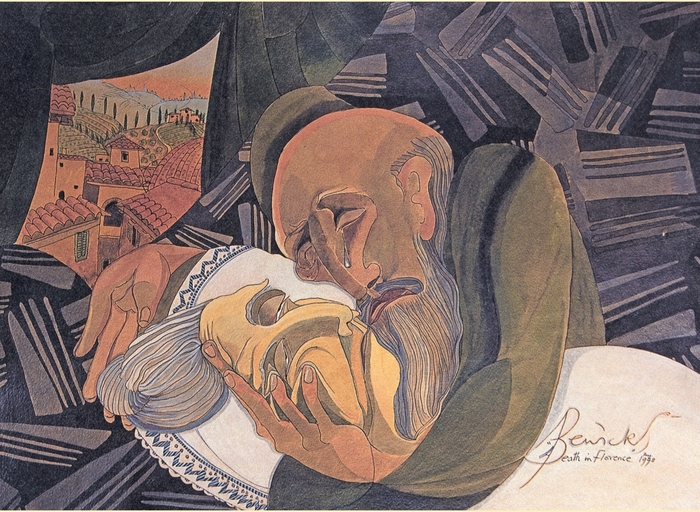From
Senior Times September/October 2014 www.seniortimes.ie
In a recent Irish Independent newspaper article about small publishing houses, Alan Hayes, summed up the spirit of his own independent press, Arlen House. Asked how he felt about authors who might be tempted to move on to bigger houses, he replied: “I’m not upset because I want to see writers thrive and I’m happy to help them along their path. I want to see them take flight.” As it happens, a writer who began her career with Arlen House, Nuala Ní Chonchuir, has just signed a book deal for her third novel Miss Emily, with
Penguin USA and Penguin Canada.
Alan Hayes has no hesitation in wishing Ní Chonchuir the best of luck and even more recognition. Such an attitude is the hallmark of a publisher whose books are consistently of high literary quality and which are undeniably visually gorgeous. Galway based and re-launched in 2000, Arlen House has found its niche in both national and international publishing arenas. Worldwide distribution is via Syracuse University
Press in a dynamic publishing partnership.
Arlen House has, historically, always been closely connected to women writers, although nowadays, not
exclusively so; Hayes has broadened out the scope of the press. But in its earlier formations, its aim was to champion and pioneer women’s writing in Ireland. Two Irelands, Literary Feminisms North and South by Rebecca Pelan (Syracuse University Press) is a good place to start exploring the story of women’s writing and publishing in Ireland. Arlen’s original founder was Catherine Rose and it came into being in Galway
during International Women’s Year, 1975. Early listings were heavily influenced by Eavan Boland. Arlen’s first publication was Rose’s The Female Experience: The Story of the Woman Movement in Ireland.
In 1978 the press moved its headquarters to Dublin and became Arlen House: The Women’s Press. Margaret Mac Curtain, Janet Martin and Terry Prone joined its ranks. The press undertook a rebuilding of ‘lost’ women writers such as Kate O’Brien, Norah Hoult, Janet McNeill among others. In 1978
also, Arlen House and sponsor Maxwell House (coffee) began a literary competition for new women writers, producing three ground-breaking anthologies and starting many writers’ careers as a result. In tandem with these anthologies, some of the most important critical work appeared, work which included Irish Women: Image and Achievement, edited by Eileán Ni Chuilleanáin (1985). Terry Prone’s The Scattering of
Mrs Blake and Related Matters and Mary Rose Callaghan’s Mothers represent two of the finest
publications by Arlen House around this time.
Another direct result from Arlen was WEB (Women’s Education Bureau) founded in 1984 by Eavan Boland, who organised writing workshops for women and also designed courses on ‘Women into Writing,’ for FÁS.
Regarding how Arlen House operates today, Hayes accepts no unsolicited manuscripts. Instead he commissions the books (over 150 to date) looking out for emerging writers, going to readings, keeping abreast of literary journals. He then contacts the writer and asks if there is a manuscript available. The books themselves are acknowledged gems in terms of original artwork covers, many of them in hardback. Hayes himself was a judge of the 2009 EU Prize for Literature; founder of the Dublin Book Festival and its former Artistic Director; former President of Publishing Ireland during its most successful period and a co-founder of Dublin’s bid for UNESCO City of Literature (which Dublin received in 2010). His own books, published by Arlen House, include Hilda Tweedy and the Irish Housewives Association, (2012) and Madame Sidney Gifford’s The Years Flew By (2000).
He’s also published Women Emerging (NUIG 2005), Irish Women’s History (Irish Academic Press, 2004) and The Irish Women’s History Reader (Routledge, 2000) among others. The list of Arlen House authors is long and illustrious, including names such as Pauline Bewick, Maeve Binchy, Geraldine Mills,
Nuala Ní Chonchúir, James Liddy, Liam O’Flaherty, Joan Newmann, Kate Newmann, Vincent Woods, Celia de Fréine and Martin Dyar.
Important books on gender issues continue to be published, internationally-acclaimed books such as Ariadne’s Thread: Writing Women into Irish History by Margaret Mac Curtain (2008) and Mary Cullen’s
Telling it Our Way, Essays in Gender History (2013). My own debut collection of short fiction Snow Shoes, appeared in 2012 from Arlen House (with original artwork from Offaly artist Emma Barone ). Galway based writers Colette Nic Aodha and James Marytn Joyce were launched with me. Joyce also compiled Noir by Noir West, an anthology of dark tales from thirty writers, again testimony to Alan Hayes’s commitment to getting writers published. This sentiment is echoed by fellow Galway writer Alan McMonagle when he says “In these difficult publishing times, Arlen House provides a rare opportunity for writers of short fiction.” McMonagle’s Psychotic Episodes is a collection of short stories described by Patrick McCabe as being “precise, tender and glitteringly compelling.” The title story in this collection was nominated for a Pushcart prize.


On a personal level, my second collection with Arlen House, A Fascination with Fabric, prose and memoir, is everything and more I could wish for. When I reflect on the list of Arlen House writers, I realise its historical significance in terms of women writers in particular and I feel fortunate to be counted among a long line of gifted writers, some of whom are profiled here. Writers, for example, like Martin Dyar (Patrick Kavanagh Award Winner, 2009). His debut poetry collection Maiden Names was shortlisted for the Pigott Poetry Prize and the Shine Strong Poetry Award, 2014. Poet Bernard O’Donoghue described Dyar’s work as being “A thrilling new development in Irish poetry.”
Awards are no strangers to Arlen House writers. Tom Duddy who passed away in 2012, was the only Irish poet to make the shortlist for the Seamus Heaney Centre Prize for Poetry and the Aldeburgh Poetry
Prize with his debut collection, The Hiding Place.
Of Arlen House books, Dyar says that they “resonate with the personality of the press itself. The feminist origins abide in the trademark sense of the individual book as a means for the preservation and renewal of
experience, a sense of voices tended and understood. This quality continues, it seems to me, by virtue of a special editorial talent and commitment, and a special sense of Ireland itself, along with a love of the book as a physical object. My own understanding of the significance and potential of poetry has been deepened through being exposed to the Arlen House ethos. It has granted me a new ideal of writing.”
Seven Ages (2005) is a sumptuous celebration of Pauline Bewick’s life and work. The book is arranged in chronological order, charting the artist’s journey from the age of two to seventy. Bewick is much loved and admired as an artist and is Ireland’s most successful woman artist. In 2006 she donated 600 artworks from her collection to the Irish State, and Arlen House catalogued this in Pauline Bewick’s Seven Ages (2006).
Bewick has the highest respect for how Alan Hayes works as a publisher, citing his always “sympathetic response.” To mark her 80th birthday in 2015, Arlen House will publish a memoir from Bewick, an event to be looked forward to.
Galway writer Geraldine Mills (Winner of the Hennessy New Writer of the Year Award, 2000) has published five books with Arlen House, two collections of poetry and three of short stories, the most recent being Hellkite. Geraldine’s reputation has grown steadily over the years, garnering substantial literary successes and solid affirmation from her peers. Her dedicated approach to the writing process itself has also been richly rewarded in works that will undoubtedly stand the test
of time.
“A writer puts his/her life into each story or poem, perfecting every phrase, every sentence. Arlen House does the same with its publications, ensuring that every aspect of the finished product is beautiful: the font, the typeface, the quality of the paper, the cover image. Anyone who picks up an Arlen book admires it immediately for its solid individuality, something that e-publishing can never compete with.” Artwork on her
books is courtesy of artists such as Pauline Bewick, Joan Hogan, Charlotte Kelly and Gerald Davis.
On the question of the economics of publishing, she says: “In an age where the Amazons of the industry are constantly trying to strip booksellers and publishers of any chance of a livelihood, small Indie publishers such as Arlen House defy all of that by continuing to believe in the power and beauty of the book. I have no doubt but my writing life would be very different if I hadn't had the opportunity to be published by Alan Hayes. Having international distribution with Syracuse University Press has opened up the world for me with my work being taught in many universities in the US including Connecticut, Boston and Seattle.
Hellkite has even found its way to Turkey and this autumn some of my stories will be taught to college students there. Gratitude to him is a small word here.”
Celia de Fréine is another such highly regarded writer, equally at home writing in English or Irish. She lives in Dublin but is originally from Newtownards, County Down and still maintains her links to Northern Ireland. A Patrick Kavanagh Poetry Award winner, she is a poet, playwright, screenwriter and librettist. She has published seven books with Arlen House, including a ground-breaking bilingual 3 volume set of plays inspired by Brian Merriman’s The Midnight Court, and most recently
cuir amach seo dom: riddle me this (2014).
Donegal award winning poet Mary Turley-McGrath is the 2014 recipient of Trocaire’s Poetry Prize, in conjunction with Poetry Ireland. Her second book of poems,
Forget the Lake, is published by Arlen House. For Turley-McGrath, “Being an Arlen House writer means belonging to a publishing house that is
dynamic, independent, inclusive and professional, a publisher who brings Irish writing to the forefront of the Irish and international scene.”
American writer Lisa C. Taylor’s most recent poetry collection, Necessary Silence was published by Arlen House in 2013. “I wouldn’t be a writer without readers,” she says, not remembering a time when she didn’t use writing “to make sense of the world.” Taylor has much praise for Arlen House, “Alan Hayes’s dedication to literature and authors is steadfast. Not only is he a great editor, his support of literature and Arlen House writers enables us to get our work out into the larger world. My tours in both Ireland and the United States have given me opportunities I would not have otherwise had. The collaborative collection (The Other Side
of Longing, 2011) with Geraldine Mills allowed both of us to read widely in the United States as well as in Ireland. ” Órfhlaith Foyle has been an Arlen author since 2005; Revenge (fiction and poetry), Red Riding Hood’s Dilemma (poetry), Somewhere in Minnesota (short fiction). “Arlen House is an independent publishing house and while that is a challenge these days, Alan Hayes is utterly committed to publishing literature, poetry and art. Clemency Browne Dreams of Gin is my fourth book with Arlen House and I am
proud of it and how it looks. After a writer writes what is their gut, all a writer wants is to be published, and Arlen House does that with great respect for the work, the book and the writer.”
This solid appreciation for a level of care and attention to detail resulting consistently in beautiful books; is
shared by many. Writers and readers alike. For information regarding any of its books or authors, Arlen
House can be contacted at arlenhouse@gmail.com



























